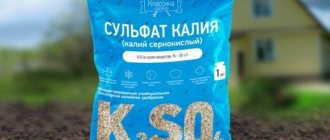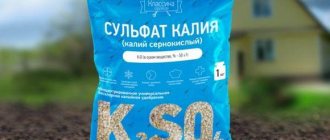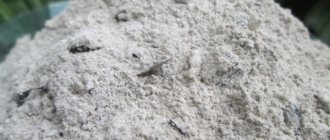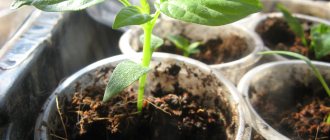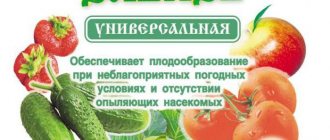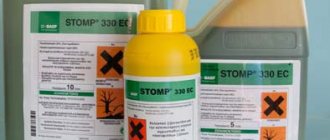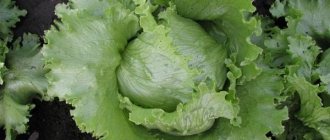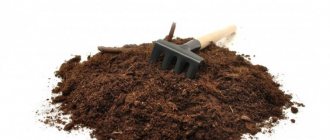Peat has several types, one of which is neutralized. This is a raised substrate processed in a special way, consisting mainly of slightly decomposed organic substances. The scope of its application is not so extensive, but the raw materials used significantly improve the growth and development of plant crops. Neutralized peat is suitable for growing a large number of flora representatives, but only if it is combined with other components. Ready-made soil mixtures are available for sale, which makes them easier to use for those who are not familiar with this process.
What is peat neutralization
Peat has varying acidity. Manufacturers of soil mixtures change its acid reaction, as a result of which it becomes suitable for growing various plants. Such a substrate is called neutralized. To make the fertilizer as needed, it is mixed with various additives. To neutralize the bottom peat, it is mixed with the top peat.
High neutralized peat mixed with lime acquires acidity at a level of up to 5.5-6.5 Ph. At the same time, it retains porosity, moisture capacity and other qualities of the top type.
Peat contains humic acids, which have a positive effect on plant growth, development and the formation of a strong root system. Biologically active substances contained in peat contribute to the formation of beneficial microflora in the soil.
After peat neutralization, its service life increases
After neutralization of peat, its service life increases, because it becomes resistant to microbiological degradation. It holds fertilizers well due to its long-fiber structure. Fertilizers remain available to plants and are not washed away. Peat is suitable for clay and sandy soils, it lightens their structure and prevents shrinkage.
How to properly use peat in the garden
To ensure that the use of peat brings maximum benefit to your green spaces, remember a few important rules:
- fresh peat is toxic, so before use it is “weathered” for some time (kept in piles that are shoveled from time to time). The duration of weathering depends on the type of peat: for lowland peat, a few days are enough, for highland peat it takes 2-3 months;
- when adding high-moor peat, be sure to add substances that will reduce the acidity level of the soil: dolomite flour, lime, ash, chalk, etc.;
- Peat is often used as a mulching material. This is especially useful on those soils that become covered with a hard crust after every heavy rain. However, you need to mulch with peat correctly. If you simply spread peat in a thin layer, then after a while all the moisture will disappear from it and it will completely lose its ability to absorb water and lose its beneficial properties. To prevent this from happening, peat in an empty area (this can be done both in spring and autumn) should be embedded in the ground to a depth of about 20 cm. For a bed with plantings, this option is suitable - spread the peat between the rows of plants and loosen it, stirring it at the same time with the ground.
Only if used correctly can peat benefit your garden.
Properties and benefits of the neutralized substance
Ash content is one of the important indicators of peat compositions. It affects the acidity of the soil, which is important for different types of plants. Some crops cannot tolerate even slightly acidic environments and die immediately.
Neutralized peat is an excellent solution for finicky seedlings. Almost any plant thrives in it. Its advantages over other compositions are obvious:
- has a fairly long service life, so it can be purchased in large quantities and stored under proper conditions;
- low-acid composition is resistant to microbiological decomposition;
- lightens the soil, makes it loose and porous;
- holds other fertilizers in the ground;
- if you cover the ground with it from above, it forms a kind of blanket that retains heat;
- even over time it does not cake or crumple;
- due to the high degree of moisture absorption, it prevents the soil from drying out;
- prevents the appearance of rot and fungi;
- enriched with minerals and beneficial microorganisms.
This number of positive qualities allows the use of neutralized peat to fertilize soils of any type and composition.
Peat soil mixtures
The best way to use peat for seedlings is to add it to different soil substrates.
They include:
- Garden, vegetable or turf soil
- Rotten leaves (leaf soil)
- Sand
- Agrovermiculite
- Perlite
- Humus
- Mullein
- Vermicompost
It is also recommended to combine different types of peat with each other. For example, mix 1:1 upland and lowland type, or upland with transitional.
The ratio of components may be different; it is selected for a specific vegetable crop. We have collected several options for soil mixtures in a table.
| Type of seedlings | Soil mixture options |
| Tomatoes |
|
| Pepper |
|
| Eggplant |
|
| Cucumbers and pumpkin |
|
| Cabbage |
|
| Strawberry |
|
For combined soil mixtures, it is best to take lowland or transitional peat. As an option - a mixture of neutral highland and lowland types in equal parts.
Sawdust in the mixture can absorb nitrogen. They can be infected with fungi, which harms the seedlings. It is recommended to replace them with agrovermiculite or coconut fiber. But the cost of such soil will be higher.
Nuances of the neutralization process
To obtain a neutralized substrate, high-moor peat is mixed with clay, slaked lime or dolomite flour. Some manufacturers mix the material with a lowland species of fossil. In ready-made mixtures, the percentage of one or another component is usually indicated, as well as the acidity level of the organic fertilizer.
To improve the beneficial properties of neutralized peat, perlite can be added to it in an amount of 10-40%, and mineral components enhance its nutritional value.
It’s easy to buy peat in our store!
Order peat from us! We offer high-quality high-moor and neutralized peat in bags from the Finnish brand Kekkila to improve the agrotechnical properties of the soil. These are special mixtures that are enriched with the necessary fertilizers. From us you can buy peat that really meets the stated characteristics and will be truly useful in your garden. We also offer economical peat mixtures for toilets, which effectively absorb odors and facilitate the rapid processing of organic matter. To reduce the compost maturation time, we recommend using environmentally friendly composting accelerators.
Scope and rules of application
Before using medium-acid peat, it is first sterilized. This procedure allows you to destroy harmful substances that may have entered the composition during the neutralization process.
The scope of application of peat mixture is quite extensive. It is used for mulching soils, winter shelter, fertilizing greenhouse plants and those grown in open ground.
High neutralized peat is used for:
- production of fertilizers for small areas with a small number of crops grown;
- growing vegetables, flowers, potted plants and salads in seedlings;
- process of cuttings of seedlings;
- improving soil quality;
- planting trees and bushes;
- protecting the root system of plants from freezing;
- mulching the earth;
- making composts.
Neutralized peat is used for growing vegetables.
The use of peat for different purposes has its own characteristics and rules.
For the garden
Peat in the areas is used to fertilize fruit and berry plantings. It is not suitable in its pure form, so the best option would be to use ready-made mixtures or prepare them yourself.
If the neutralized peat composition is used on the site for the first time, then it is distributed over the surface of the earth at the rate of 60 liters per square meter. m. For soils previously fertilized in this way, add no more than 30 liters of organic matter per square meter. m.
You can increase the beneficial properties of the substrate by adding humus to it. If deep soil fertilization is required, then the nutrient composition is applied only wet.
To use neutralized peat in the garden, it must be properly prepared. The raw materials are dried and fluffed well for 2 weeks. If possible, the composition can be sifted through a sieve. Once the peat is spread over the garden plot, it must be constantly moistened. This will allow the roots not to dry out and be continuously saturated with nutrients.
For greenhouse cultivation
The use of peat in greenhouses has become indispensable due to the properties of the fossil to absorb and retain moisture well. Thus, the optimal microclimate for the normal development of plants is protected for a long time. In addition, greenhouse owners do not have to constantly worry about maintaining the required temperature level. The antiseptic properties of the organic mixture allow it to be added to the soil in an amount of more than 50% of the total mass of the earth.
For indoor and garden flowers
Fans of indoor plants will be interested to know that peat will become an indispensable assistant in this process. Using minerals as fertilizer helps flowers recover faster after transplantation and develop in a permanent place.
Neutralized peat is used for garden flowers
Neutralized peat is especially good for garden peonies. With this fertilizer they grow faster, bloom and emit a strong, pleasant smell. Organic matter is used both as an internal fertilizer and as a mulch layer. In the second case, peat must be combined with mineral fertilizers.
Unlike other types of natural resources, neutralized peat can be used without fear for the safety of your plantings. Its composition is suitable for almost all crops, regardless of their type, method and place of cultivation.
What is the best peat for seedlings?
Peat can not only be beneficial, but also harm your favorite plants. The fact is that it has a certain acidity (it is different for each type), and each fruit or flower needs these nutrients to varying degrees.
For agricultural and garden use, the Russian manufacturer now offers a fairly wide range of peat-based fertilizers, but for seedlings it is better to use species with a neutral pH. These include the following.
Garden soil. It is used in the form of fertilizer in a personal plot or vegetable garden. Serves to nourish depleted soil and is a ready-made fertilizer. If you use garden soil for planting seedlings, then take soil from your site as soil, then your seedlings will survive transplantation less painfully. If you are using soil from another area (for example, from a greenhouse or forest belt), then it is better to use lowland peat
.
Peat for seedlings
Can be combined with any soil. Add it in accordance with the application table (it is usually on the packaging of the container in which you purchased the peat). Many people do not recommend using soil from their own plot, as it may have been contaminated since last year with insect larvae, late blight, and so on. To do this, scald the soil with boiling water (or a weak solution of potassium permanganate), and adding peat will completely saturate it with the necessary elements.
When transplanting seedlings into the ground, a plant grown in already familiar soil will be more resistant to diseases and will take root faster and more painlessly. At the same time, if you buy ready-made soil for seedlings (vermicompost), there is no need to additionally feed it with peat, since it is usually already saturated with it.
Lowland peat is characterized by low oxidation and a very high organic content. Such peat for seedlings is indispensable in regions where clay soils with a high acid content predominate. At the same time, lowland peat will not be destructive for temperate soils, since its pH neutrality practically does not harm plants and promotes growth well.
Other uses of peat
Various filters are made from peat. They are used to treat wastewater, storm drains, waterproofing structures, and capture emissions of petroleum products into water bodies. The material is able to capture carbon dioxide and toxic substances from the air. Peat air filters are installed on the pipes of factories and factories.
There are ways to process peat in gas generating plants. It is also used to generate electricity through hydrolysis. But this area is not very developed.
High peat with a low degree of decomposition is an excellent filler for mattresses and pillows. This is an environmentally friendly raw material that perfectly absorbs sweat and moisture, does not allow bacteria and mites to multiply, and does not cause allergies. Before use, the material is dried, cleaned and plant fibers are separated. They are the ones that serve as filler.
In Finland, people began to make clothes from peat. Plant fibers are separated from the material and processed into threads. The result is a durable and original fabric.
Peat is an integral part of the production of real malt whiskey. Briquettes are used for drying barley seeds. When burned, they release phenols and resins, which envelop the grain and give the drink a special taste and aroma. In addition, filters are made from high-moor peat to purify the drink from fusel oils.
Advantages of cooperation with Zhytomyrtorf LLC
By contacting the company, customers can count on qualified assistance from the organization’s employees, who are always ready to help in choosing the optimal product for use in various fields. You can fill out an application for the purchase of neutral-type peat by calling the numbers located on the company’s website, or by leaving a request electronically.
The organization has been selling high-quality products at an affordable cost for many years. The company accepts applications for wholesale and retail shipments of raw materials in different types of packaging: big bags, bags, sacks, loose. Payment is accepted by cash and bank transfer. We guarantee our customers a high level of service and maintenance, and of course, a high-quality product of our own production!
Contact us!
Meaning
Peat, due to a number of characteristic features, is of great importance in various spheres of human life. Thanks to its balanced composition, the product provides plants with essential microelements and nutrients, and also significantly increases soil fertility. Neutralized peat is obtained by adding chalk and other neutralizing elements, and is also slaked with lime.
The main area where the product is actively used is, of course, agriculture. It is here that a neutral type of raw material is used to qualitatively improve soil fertility. Due to its versatility and balanced acidity level, the peat product is actively used for germinating seedlings of various agricultural plants and crops. Zhitomirtorf LLC offers neutral peat to buy to a wide range of consumers.
Main characteristics of peat
The main features of the raw materials include the following points:
- The main purpose of neutral peat is to significantly increase the level of quality characteristics of the soil and its mulching. An environmentally friendly, homogeneous product is used for the production of nutrient soil;
- neutral peat is the upper layers of the raised type, which is characterized by a low level of decomposition, as well as the ability to reduce soil acidity to the required levels;
- The product contains a high content of organic components. The raw materials do not contain weeds and pathogens and bacteria;
- characterized by an increased level of moisture absorption and wonderful breathability;
- raw materials reduce the percentage of nitrates in the soil and protect against the effects of harmful chemicals and poisons.


